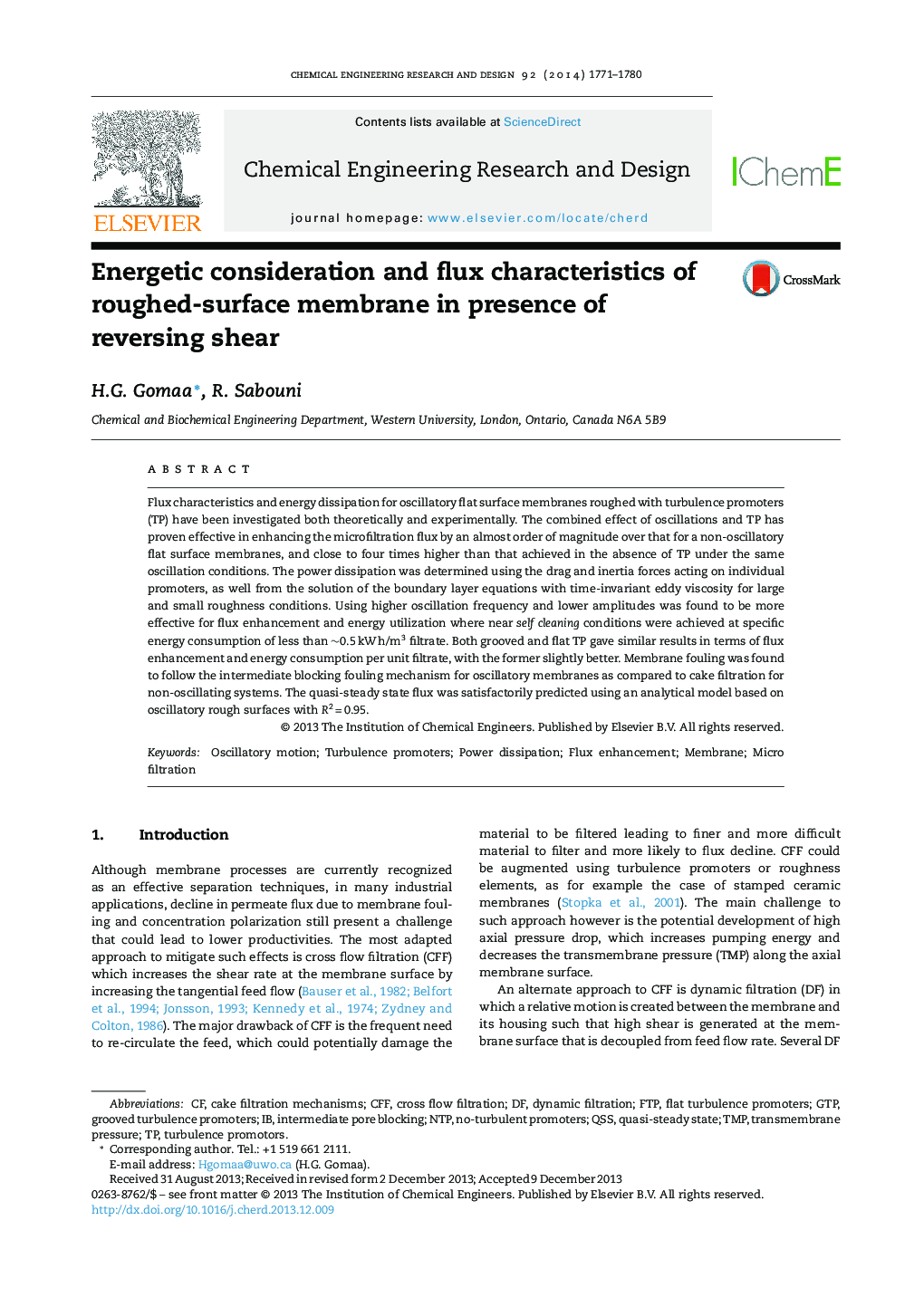| کد مقاله | کد نشریه | سال انتشار | مقاله انگلیسی | نسخه تمام متن |
|---|---|---|---|---|
| 621036 | 882529 | 2014 | 10 صفحه PDF | دانلود رایگان |
• Investigated membrane oscillation with flat and grooved turbulence promoters (TP).
• Close to an order of magnitude steady flux enhancement was observed.
• Specific energy consumption of less than ∼0.5 kW h/m3 filtrate can be achieved.
• Power dissipation and flux are modelled and compared to experimental data.
Flux characteristics and energy dissipation for oscillatory flat surface membranes roughed with turbulence promoters (TP) have been investigated both theoretically and experimentally. The combined effect of oscillations and TP has proven effective in enhancing the microfiltration flux by an almost order of magnitude over that for a non-oscillatory flat surface membranes, and close to four times higher than that achieved in the absence of TP under the same oscillation conditions. The power dissipation was determined using the drag and inertia forces acting on individual promoters, as well from the solution of the boundary layer equations with time-invariant eddy viscosity for large and small roughness conditions. Using higher oscillation frequency and lower amplitudes was found to be more effective for flux enhancement and energy utilization where near self cleaning conditions were achieved at specific energy consumption of less than ∼0.5 kW h/m3 filtrate. Both grooved and flat TP gave similar results in terms of flux enhancement and energy consumption per unit filtrate, with the former slightly better. Membrane fouling was found to follow the intermediate blocking fouling mechanism for oscillatory membranes as compared to cake filtration for non-oscillating systems. The quasi-steady state flux was satisfactorily predicted using an analytical model based on oscillatory rough surfaces with R2 = 0.95.
Journal: Chemical Engineering Research and Design - Volume 92, Issue 9, September 2014, Pages 1771–1780
